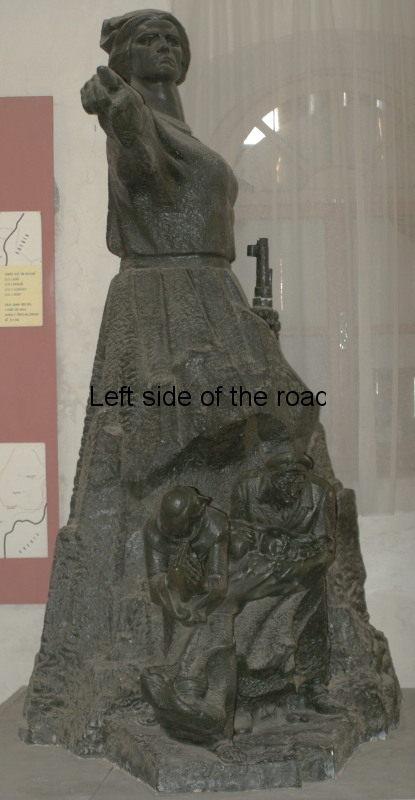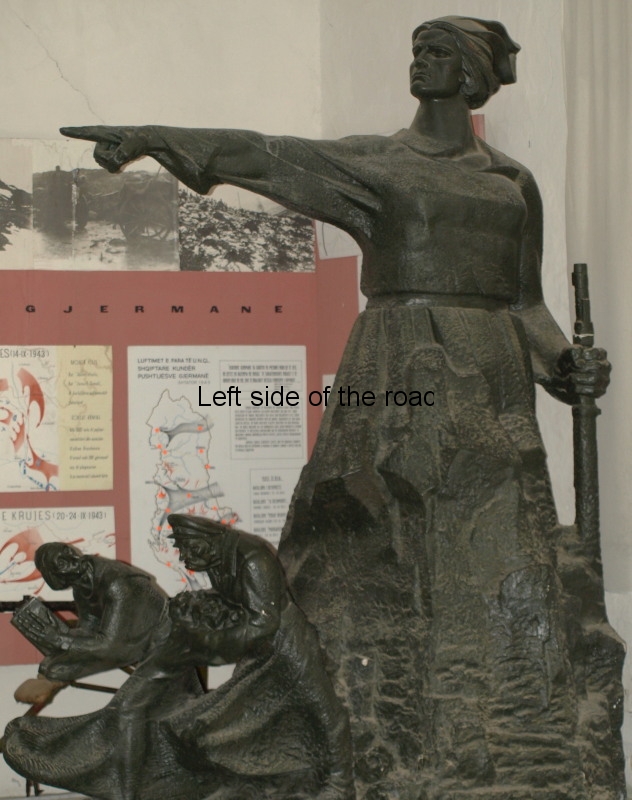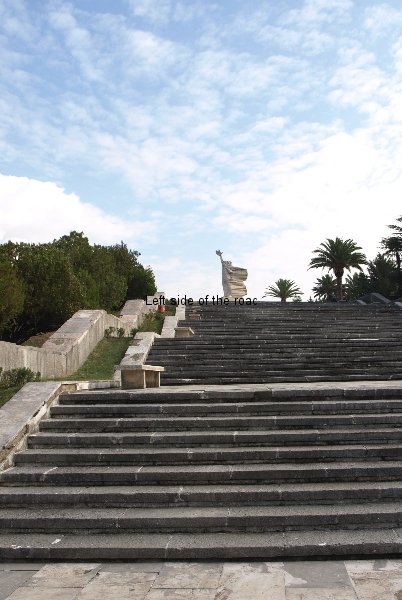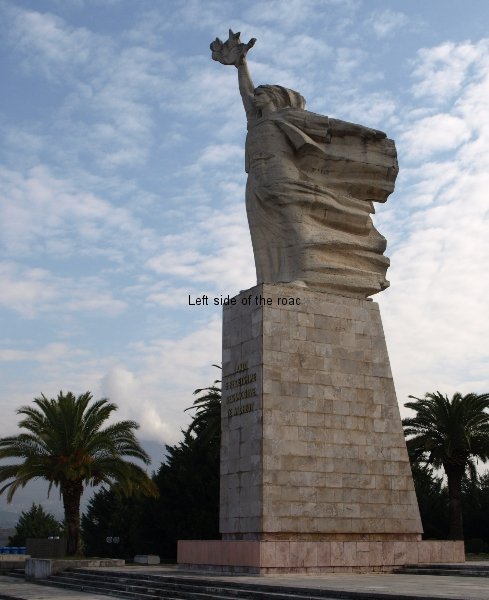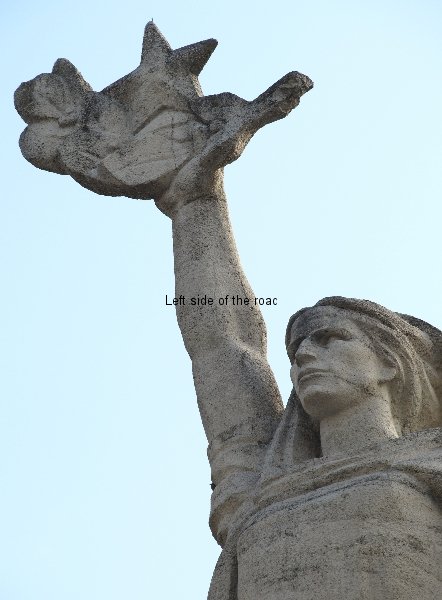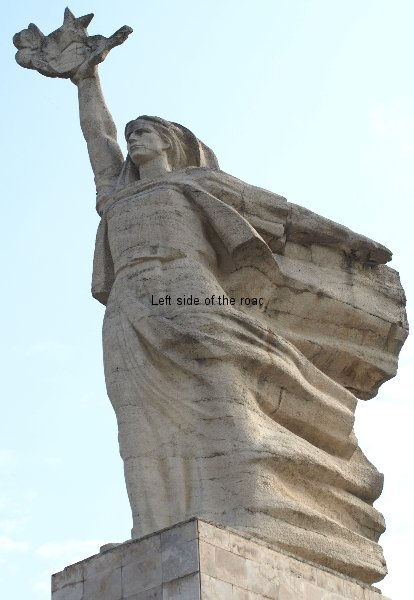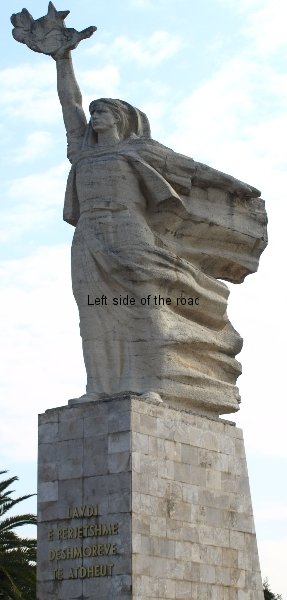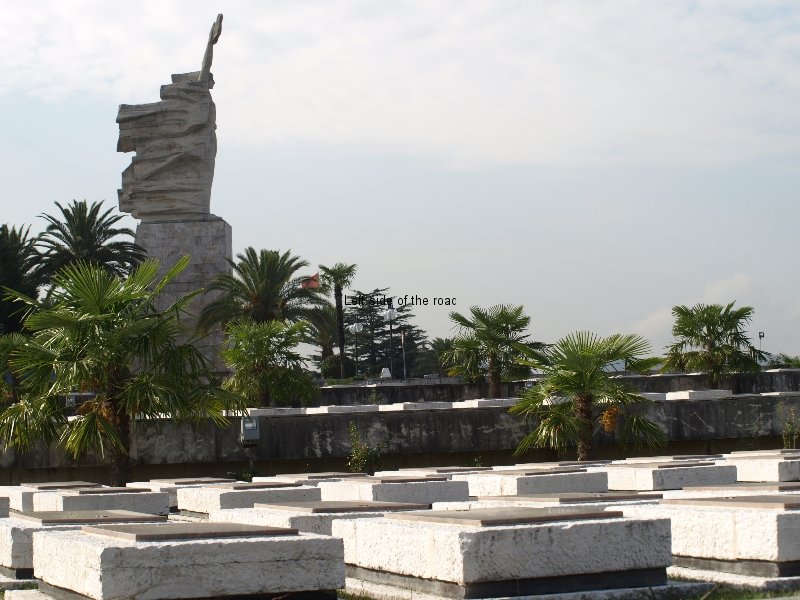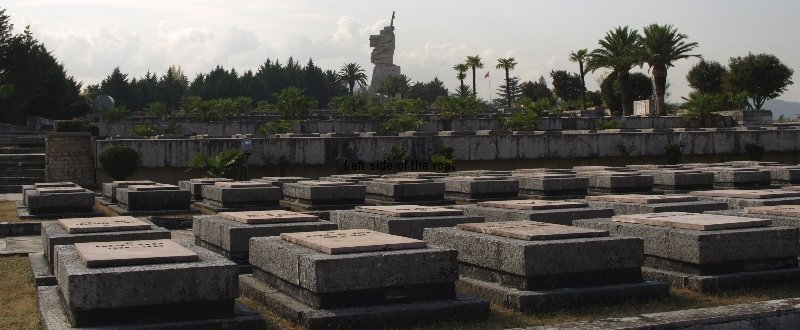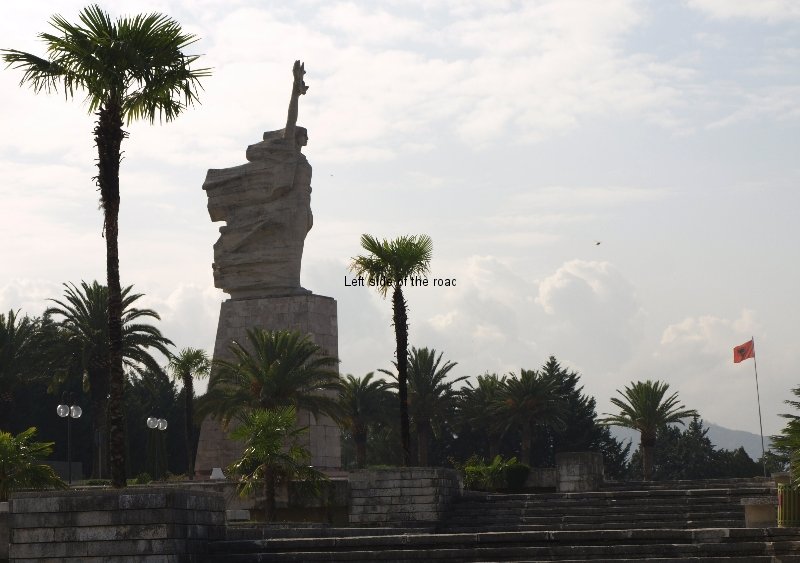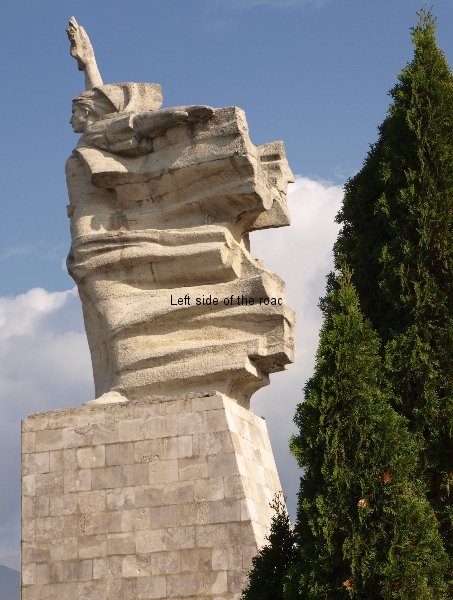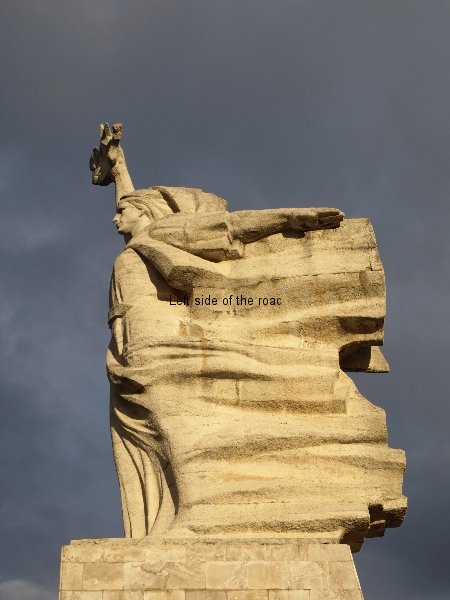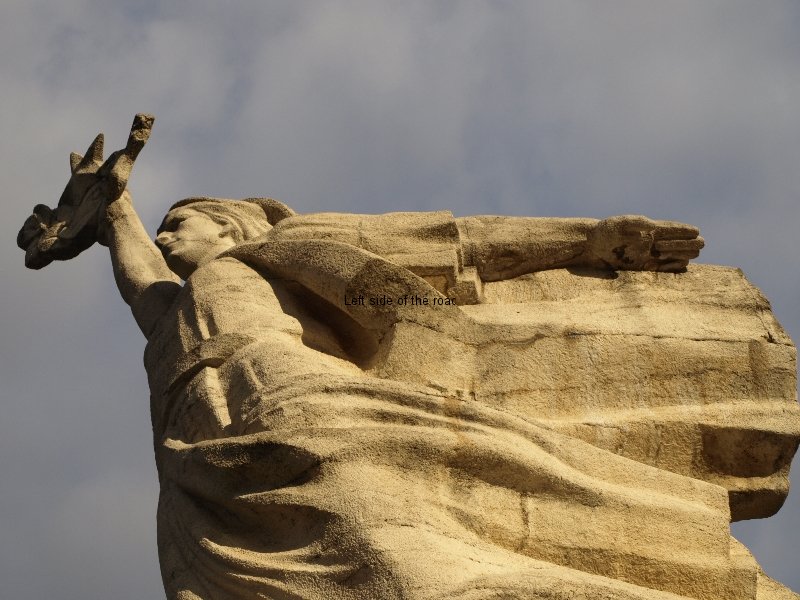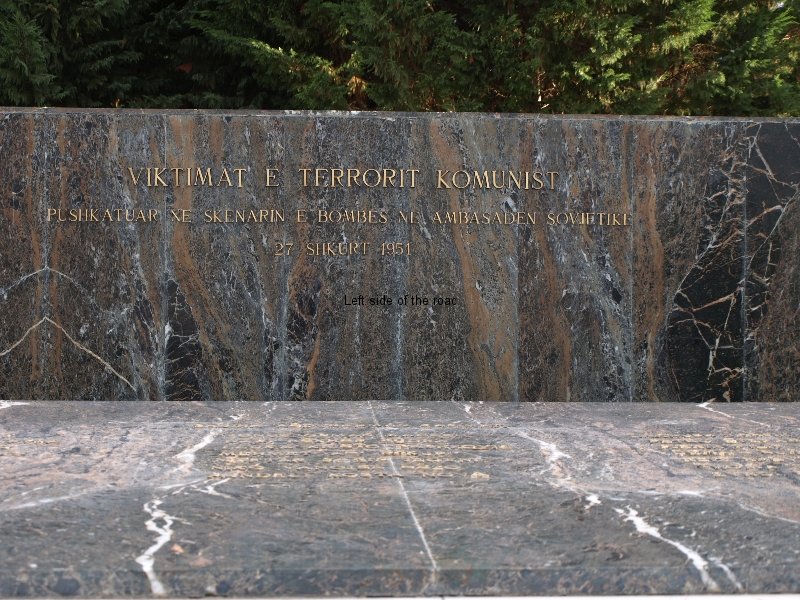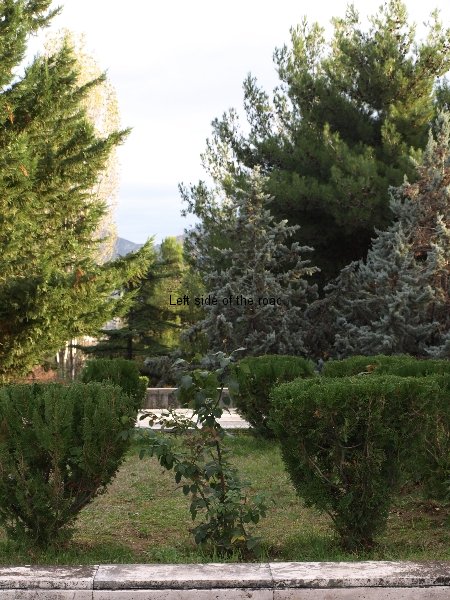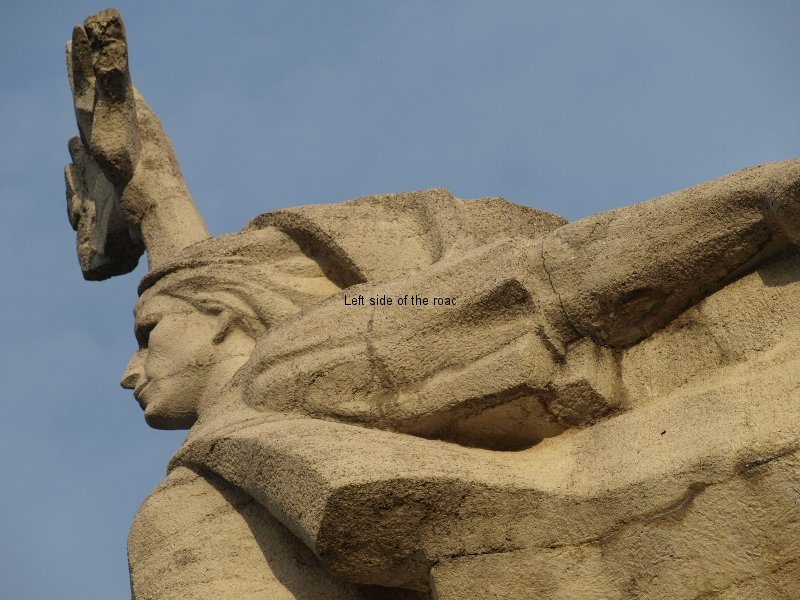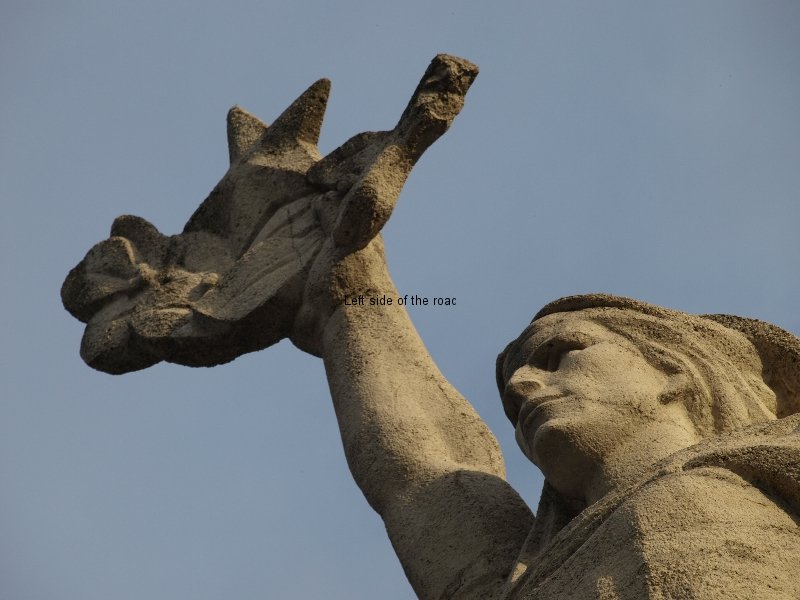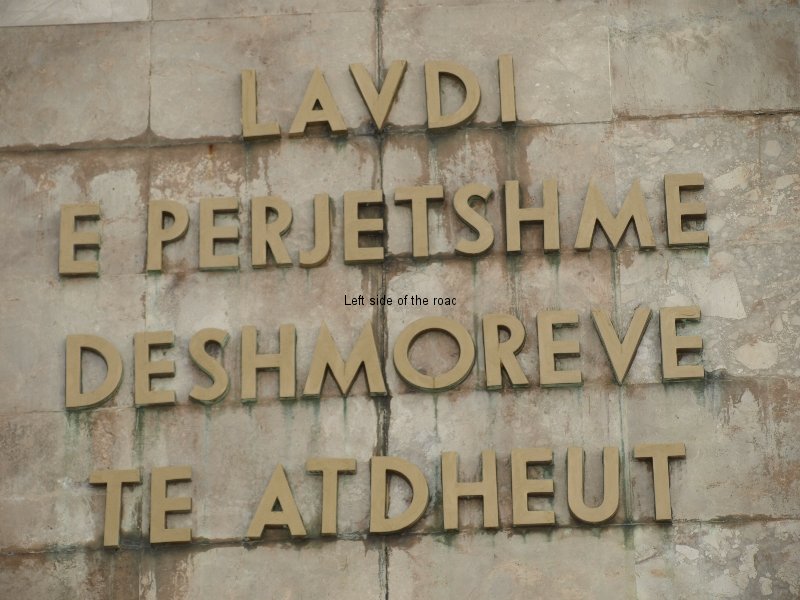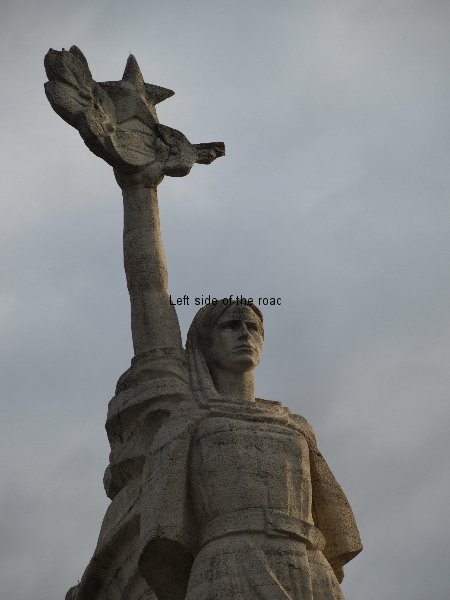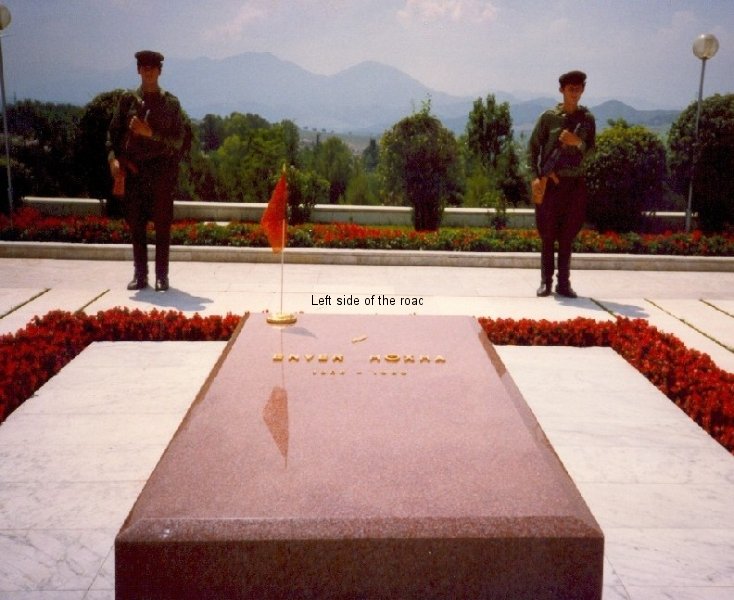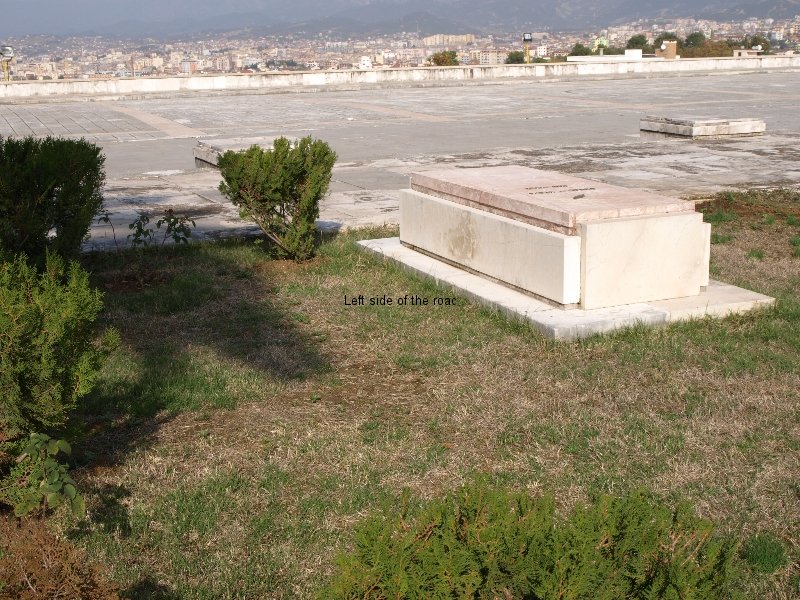
Mother Albania Expelling The Priest and The Monarchy
Mother Albania Expelling The Priest and The Military
There are fine examples of Socialist Realism in the Armaments Museum in the Castle in Gjirokastra, but you might have to ask to go upstairs to enter this older part of the museum – especially out of the summer season. ‘Mother Albania Expelling The Priest and The Military’ is one such sculpture.
The Castle in Gjirokastra is the place to visit for any tourist to the city. Not only is it an interesting place historically it also affords a fine view of the old town below as well as the fertile valley (now no longer farmed) and the mountain ranges in the distance. The Armaments Museum is located upstairs, off the main vaulted artillery gallery, just to the left of the new, very much bland, most recent museum manifestation. This is not always open so you may have to look for someone who has the keys but it shouldn’t be a problem and it’s well worth the effort.
The museum was opened in 1971 in what used to be part of the Castle Prison, used extensively in the days of Ahmet Zogu, the pre-war dictator and self-proclaimed king. (The entrance to the prison cells is off the corridor to the Armaments Museum so make the time and the effort to see this part of the castle. At the end of the cells look for the sculpture of The Two Heroines by Odhise Paskali, which commemorates the murder of two female Communist Partisans by the Nazis during the Liberation War.) When society collapsed in the 1990s this museum, along with many throughout the country, was looted of many of its antiquities and anything that was considered of value, as well as attacks on many example of socialist art. However, a number of examples still exist to this day.
(There was obviously discontent within the population and the reasons for that have to be studied and lessons learnt for the future. What is certain is that reactionary, fascist and lumpen elements rode on the back of this discontent and they were responsible for the mindless looting of the country’s many museums (the museum in Bajram Curri is one of the most bizarre I’ve ever entered) as well as the book burning that took place in Skënderbeg Square in Tirana.)
Here I want to just concentrate on one of the statues to be found in the section of the museum that tells the story of the anti-Fascist struggle of the Albanian people under the leadership of the Albanian Communist Party (later known as the Party of Labour of Albania) led by Enver Hoxha.
The sculpture was inspired by the novel ‘The General of the Dead Army’ by the Gjiroskaster born Albanian writer Ismail Kadare. The writer, who achieved fame during the Socialist period of Albania’s past, left the country for the capitalist west when everything fell apart in the 1990s – like many ‘patriotic’ intellectuals.
This statue, which I’m calling Mother Albania Expelling The Priest and The Military (as I don’t know its official name) depicts a woman, larger than real size, with her right arm outstretched and her finger pointing into the distance indicating that the other two individuals should ‘Go’ – to where we do not know but the impression we get is that they are not wanted here – ‘here’ being Albania.
We know that she is Albania as there are many representations of her throughout the country, most notably the huge statue of Mother Albania that holds the red star in her upraised hand in the National Martyrs’ Cemetery in the hills overlooking Tirana. The sensation on looking at this woman is that she is strong and determined, not just physically but in the way that she exudes confidence. She knows what she wants and she knows how to get it. And one way to make sure that she gets what she wants is the possession of the rifle, the barrel of which she holds in her left hand as it rests on the ground.
And it’s common to see women armed in the many lapidars (Albanian monuments) that still exist throughout the country. This can be seen on works of art as diverse as the mosaic on the facade of the National Historical Museum in Tirana to the statue in the Martyrs’ Cemetery in Lushnje to the (now sadly abandoned and discarded) commemoration to the young heroine of the National Liberation War, Liri Gero.
(Here it might be useful to remind readers, or inform them if they didn’t know before, that the revolutionary slogan of the Party of Labour of Albania (as the Albanian Communist Party was known throughout the period of socialist construction) was: ‘To build socialism holding a pickaxe in one hand and a rifle in the other.’ And this should be remembered when analysing those works of art produced in that period. This meant that the success of socialist construction depended upon armed workers and peasants, ever vigilant against attempts to destroy workers’ power. This has its parallel in the history of Chinese Communism with the famous quote from Chairman Mao Tse-tung that ‘political power grows out of the barrel of a gun’.)
We also know the woman is Albania as her skirt morphs into the mountains of the country. Those mountains define the country. They have shaped the culture, determined its history, formed its economic development, delineated its tribal and ethnic structure, moulded the thinking of its people and provided the environment in which they were able to resist invaders for centuries. As well as all that those mountains provide the visitor with some of the finest scenery in southern Europe.
So the woman arises from, emerges out of, the soil of Albania, she is a result of the history that has gone before, she is part of a tradition that fights against ignorance, oppression and death. And those elements are represented by the two other characters in the sculpture, much smaller physically than the women, again a statement of their respective relevance to the country.
One is the priest. He wears the traditional dress of a Catholic priest at the early part of the 20th century. We know he’s Catholic as he clasps a Bible in his hands, there’s a cross inscribed on the front cover. If the woman is confident he is the opposite. He is bent almost double and looks afraid and unsure of himself. He looks questioningly at the other individual. Is he after answers, reassurance, support? That’s for us to decide. What we do know is that he’s not going to get any of what he may be after. By expelling him from the country Albania is ridding the country of ignorance, superstition and obscurantism.
That’s because the other is not concerned with the priest, he’s more concerned for himself. He’s scowling and has an angry look on his face. He’s probably as angry at the priest as he is at Albania; one is throwing him out of the country and the other weak and clinging. He is dressed in some sort of uniform, with a long trench coat, and represents all the rest of the problems that the Albanians had endured over the years such as the self-proclaimed king – who was also an oppressive landlord in his own right – as well as the dictatorial military regime. These forces of reaction produced nothing but death, represented by the skulls which he holds in a cloth in his hands and which can be seen under his coat, at his feet.
In the sculpture Albania is banishing these feudal remnants from the country forever but history has shown that if the workers are not vigilant then those same forces defeated one year will come back the next, and with a vengeance, if they are given the opportunity.
The statue could do with a bit of dusting – but then many of the museums throughout the country suffer from neglect to one extent or another. Nonetheless this is a fine example of socialist realist sculpture still on (limited) show in Albania.
(Albania is in a bit of a quandary about its past (a situation that you also experience in the erstwhile Soviet Union). If it ignores the anti-Fascist struggle against both the Italian and German invaders, which was led to victory by the Communist Partisans, then there’s not much to put in the museums. It might not be wise to remind the people of the condition of their grandparents when that existence was one of feudal oppression in the 20th century. Economic ‘liberalisation’ also means that the museums are being starved of resources and I’ve not found it so easy to get the information I would like (at least so far) and cannot provide accurate details about all the works of art I hope to post on the blog. So if any reader has any information then I would be grateful if they could pass it on. Perhaps then the picture of Albanian Socialist Realist Art will be more rounded.)



